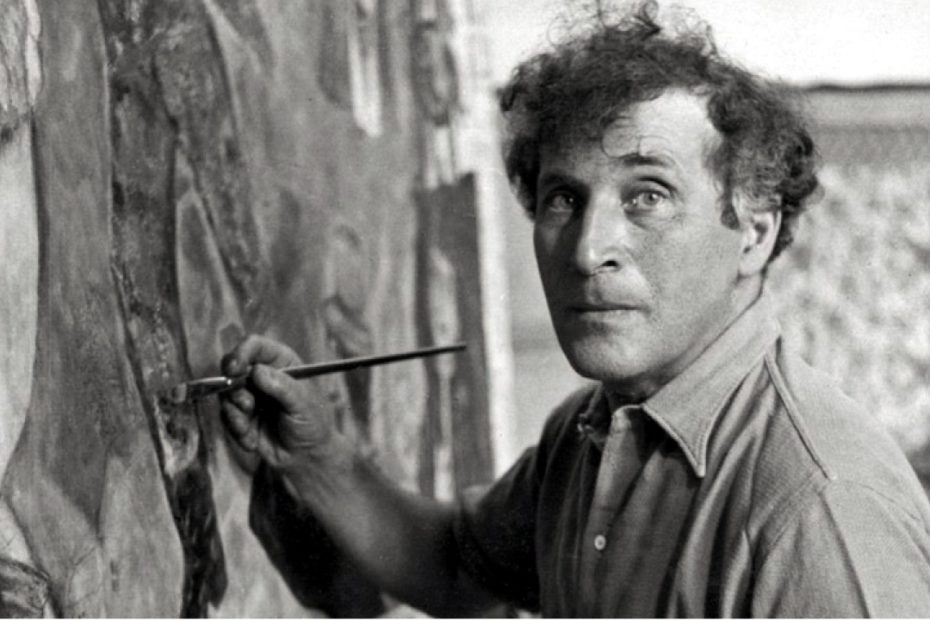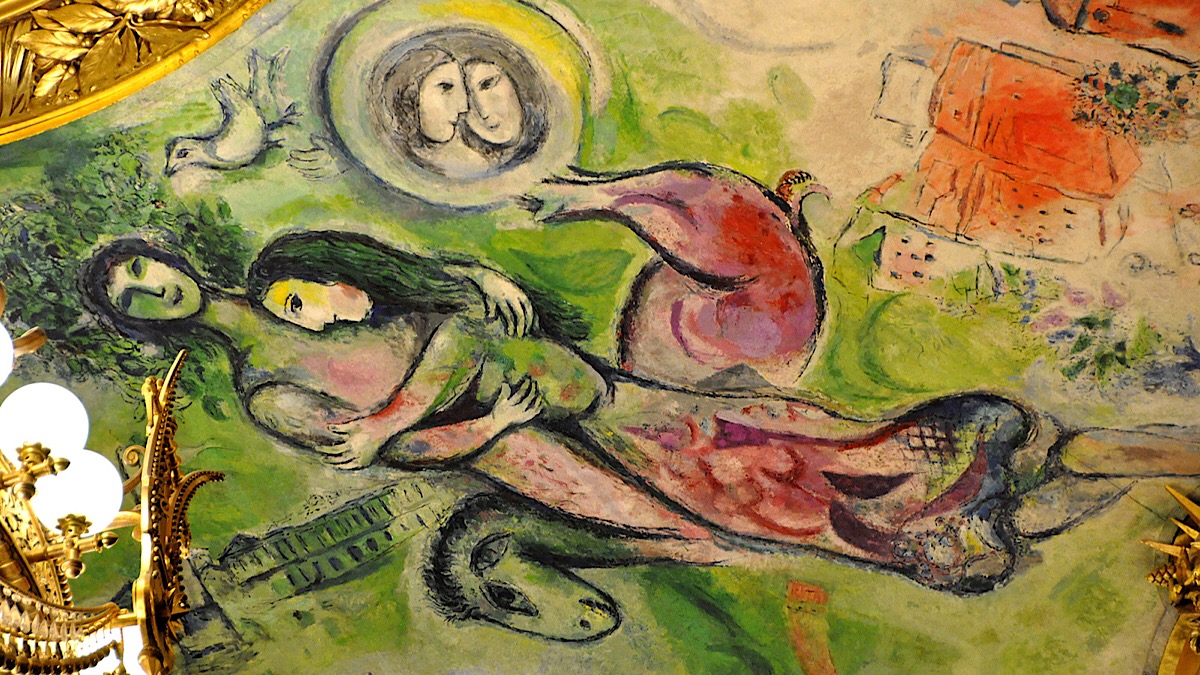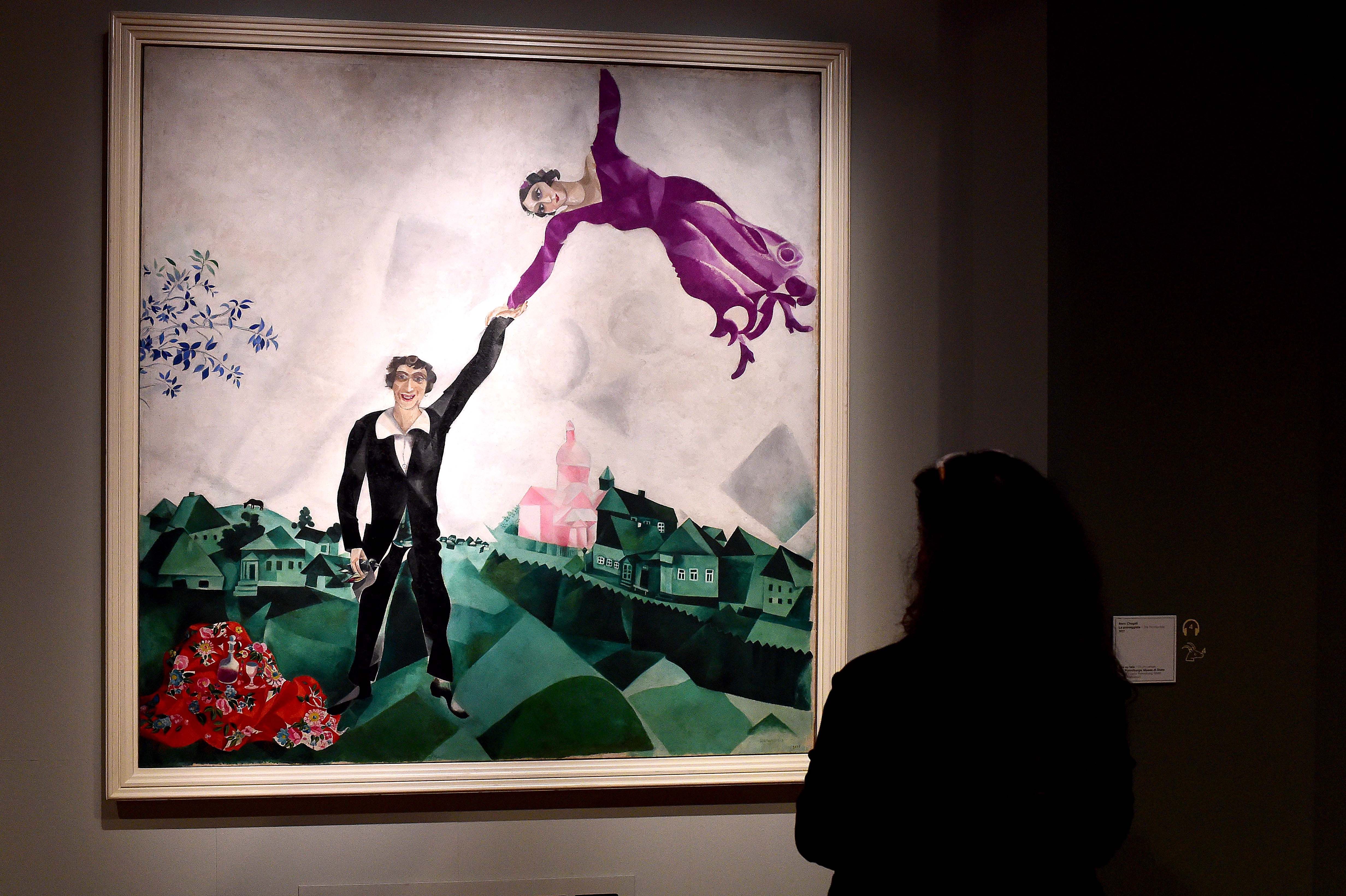Vita di Chagall: 5 cose da sapere

Hai mai desiderato conoscere meglio la vita di Chagall e la magia delle si opere?
In questo post ti porto alla scoperta del colorato universo di Marc Chagall, raccontandoti 5 fasi cruciali della sua esistenza.
Vita di Chagall: 5 cose da sapere

1. ORIGINI DI CHAGALL
Marc Chagall, nato il 7 luglio 1887 a Vitebsk, una città ora situata in Bielorussia, intraprende il suo viaggio artistico nella lontana Russia. Fra il 1907 e il 1910, la sua sete di sapere lo porta a studiare alla Scuola Imperiale per la Protezione delle Arti di Pietroburgo, e poi sotto la guida di Léon Bakst.
Il fascino di Parigi lo cattura presto, portandolo a incontrare figure chiave del mondo artistico come Guillaume Apollinaire e Robert Delaunay. Qui, Chagall si immerge nel colore dei Fauves e del Cubismo, che lasceranno un’impronta duratura sul suo stile.
2. LE PRIME MOSTRE DI CHAGALL
Il 1912 rappresenta un anno importante per Chagall, poiché partecipa al Salon des Indépendants e al Salon d’Automne. Il suo debutto solista arriva poco dopo, nel 1914, presso la Galerie Der Sturm di Berlino.
Con lo scoppio della guerra, Chagall ritorna a Vitebsk, e nel 1918 assume il ruolo di Commissario alle Belle Arti. Durante questo periodo, fonda l’Istituto d’Arte Moderna, ma le differenze creative con i sostenitori del Suprematismo lo costringono a dimettersi nel 1920.
La sua avventura artistica allora continua a Mosca, dove realizza le sue prime scenografie per il Teatro Ebraico Statale.
3. I VIAGGI DI CHAGALL E IL SUCCESSO
Dopo una breve sosta a Berlino, nel 1923 Chagall fa ritorno a Parigi, dove incontra l’editore d’arte Ambroise Vollard. In questo stesso anno realizza anche l’opera intitolata “il violinista verde“.
Il 1924, invece, lo vede protagonista di una mostra personale presso la Galerie Barbazanges-Hodebert.
Durante gli anni ’30, il suo spirito inquieto lo spinge a viaggiare attraverso Palestina, Olanda, Spagna, Polonia e Italia, esplorando nuovi orizzonti artistici.
Nel 1933, la sua creatività viene celebrata in una grande retrospettiva organizzata dalla Kunsthalle Basel.
4. GLI STATI UNITI E IL RITORNO IN EUROPA
Con lo scoppio della Seconda Guerra Mondiale, Chagall cerca rifugio negli Stati Uniti. Qui, nel 1946, il Museum of Modern Art di New York – MoMA dedica una retrospettiva esponendo un numero considerevole di opere.
Tornato in Europa nel 1948, Chagall si stabilisce definitivamente in Francia, esponendo in prestigiose gallerie di Parigi, Amsterdam e Londra.
5. LE COMMISSIONI PUBBLICHE
Gli anni ’50 e ’60 sono periodi di fervente creatività. Chagall inizia a realizzare anche delle sculture e riceve prestigiose commissioni. Tra queste, spiccano le vetrate per la sinagoga dell’Hadassah-Hebrew University Medical Center a Gerusalemme (1962), il soffitto dell’Opéra di Parigi (1964), e le vetrate per l’edificio delle Nazioni Unite a New York (1964). Un decennio di notevoli realizzazioni culmina con una mostra dedicata al Louvre (1977-78), celebrando le opere realizzate tra il 1967 e il 1977.
La vita di Chagall si conclude a Saint Paul de Vence, in Francia, il 28 marzo 1985. Quell’anno, il Philadelphia Museum of Art rende omaggio al maestro con una significativa retrospettiva.

Attraverso il vortice di colori e forme, l’eredità di Marc Chagall continua a brillare, svelando una realtà intrisa di sogno e poesia, tracciando un percorso seguito da innumerevoli artisti contemporanei.
Seguimi su:
About me
In questo blog non ti spiego la storia dell’arte, ma racconto le storie di cui parla l’arte


